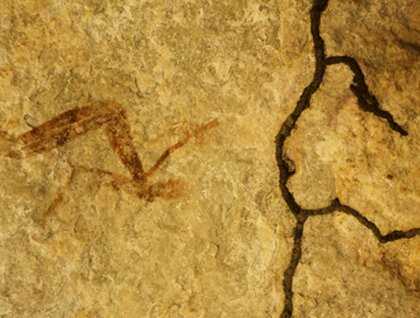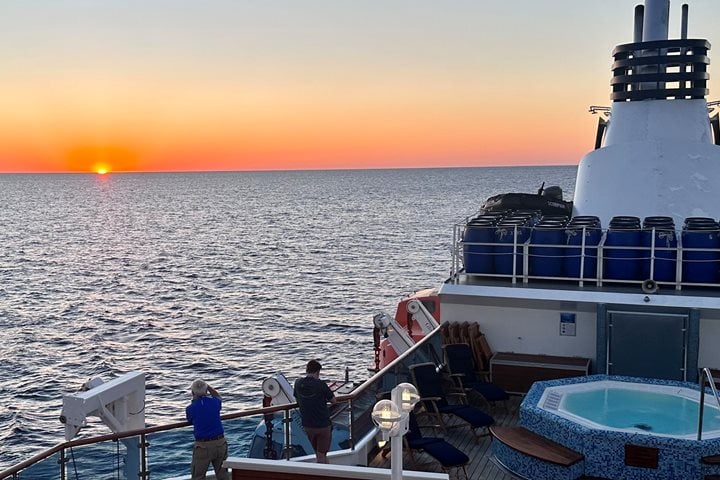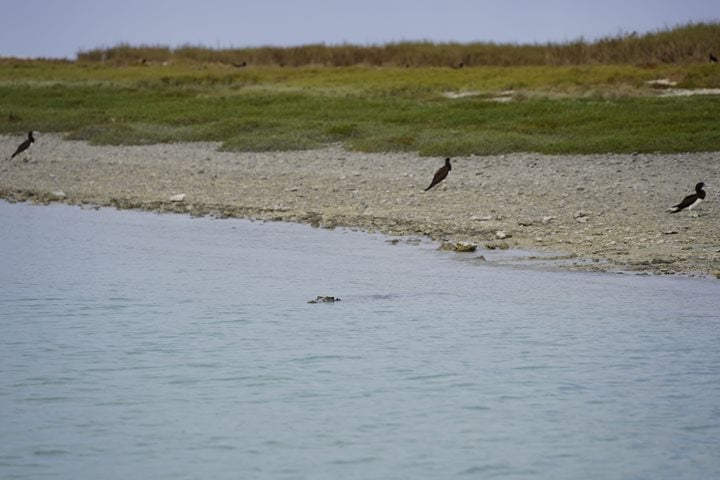Having left behind the incredibly picturesque Hunter River and its wonderful wildlife, this morning dawned another Kimberley blue-sky day as we steamed our way north and into the broad expanse of Vansittart Bay. A geographical feature named by the legendary Phillip Parker King on the 4th of October 1819 during his second voyage around Australia in HMC Mermaid, Vansittart Bay became another fruitless exploration in search of fresh water whilst charting the harsh Kimberley coast.
During King’s exploration of the bay he found it well populated by Aboriginals and had an unfriendly encounter in the southeast corner of the bay in a place he later named Encounter Cove. Going ashore at a spinifex-covered island they found evidence that Macassan seafarers visited the island, noticing broken earthenware jars consistent with their culture. He subsequently named the island Jar Island. King postulated that their own unfriendly encounter with the Aboriginals may have been on account of past unsavoury interactions with Macassan visitors to their shores. Jar Island is the place for our first of today’s two explorations ashore.
The reason we venture ashore at Jar Island is to view some intriguing examples of what has become to be known as Bradshaw Art after an exploration pastoralist, Joseph Bradshaw, the first non-Aboriginal to discover and record the art form in the Kimberley in 1891. The origin of this enigmatic art is surrounded by conjecture and controversy and has been the subject of many studies to date and place the art ever since. Even Aboriginal people today cannot agree on the origin of the art although stories of myth explaining connection to present day peoples have become known. In parts of the Kimberley the Gwion Gwion, or sandstone shrike-thrush, is said to have been the art’s mythical creator and is now a term commonly referring to this art. We marvel at the intrigue of images that although appear somewhat incongruous with Australia’s recent Aboriginal history, there is ultimately no final explanation for.
Back on the National Geographic Orion, officers of the deck and crew reposition her for further activities while we settle into another incredible lunch selection provided by her galley team. This afternoon we go ashore at Vansittart Bay’s northeastern shores on Anjo Peninsula. This is a beautiful beach landing backed by a salt pan surrounded by Kimberley wetland bush blending into open woodland. A croc slide beside the estuarine creek draining the pan betrays an earlier local visitor. But the focus of the journey is to come to terms with the end point of an ill-fated World War II flight of a C-53, the military variant of the well-known Douglas DC-3 commercial aircraft.
As we top the beach dune and make our way across the salt pan, the naturalists help reward observant eyes with the birdlife, invertebrates, and other interesting critters and plants that abound. On reaching the crash site, we hear about the context of the flight back on February 26, 1942, how she came to be put down and the ensuing rescue saga of her six passengers and crew. As the day’s light softens, there are plenty of photo opportunities which are taken both during the walk to the well-preserved wreck and afterwards along the beach. Back on the boat we enjoy a laugh with Glenn’s trivia over a cup of tea. Later over dinner we marvel not only at the meal but also at the day that was. As we again retire to the soothing sounds of Glenn’s live entertainment we realise thankfully this Kimberley coast has much more yet to come!









